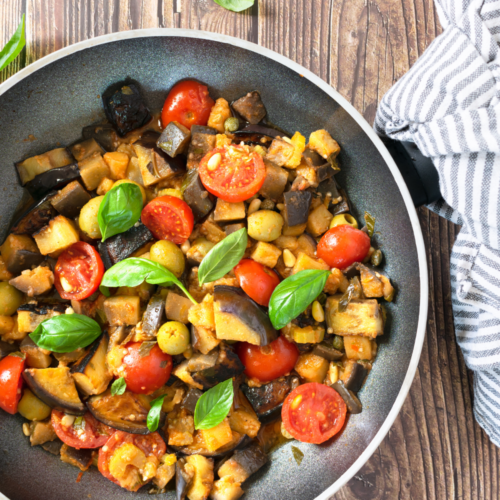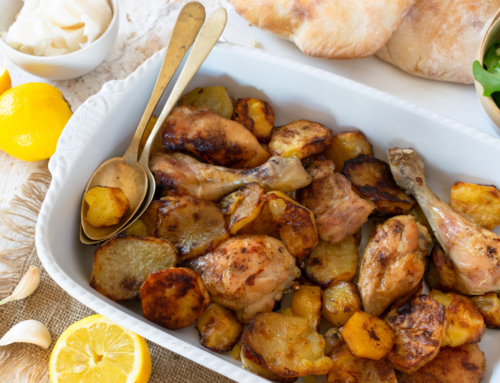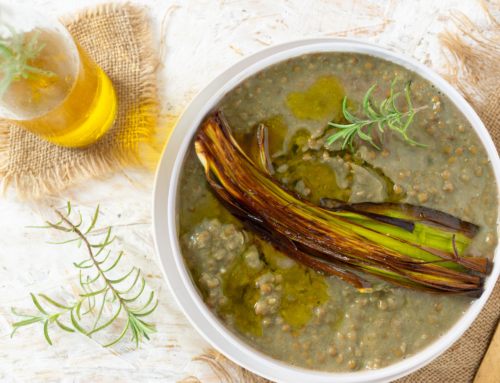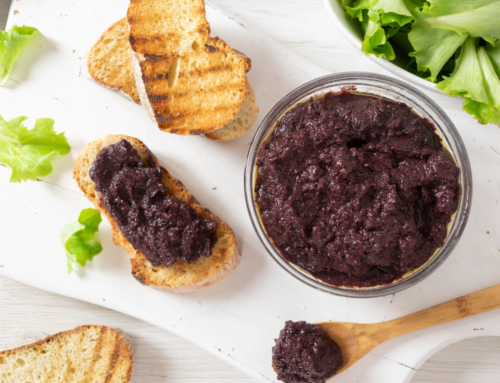This Sicilian eggplant caponata is a classic vegetable dish from the Mediterranean. One of the things I like the most about Sicilian gastronomy is the abundance of sweet and sour preparations that are not very common in the rest of the country. This is because the Italian island had been an Arab colony for almost two centuries around the first millennium AD. During that period, Sicilian food was, of course, heavily influenced by northern African flavors and ingredients.
Some of the dishes invented in that period are now forever lost, but Sicilian caponata is so good that it is still a great favorite today. Of course, the recipe is not the same as in 1000 AD, as the ingredients have changed quite a bit, but the original tangy and sweet flavor is still there.

What makes this dish so unique is its agrodolce – namely sweet and sour – sauce, made by combining white sugar and white wine vinegar. Caponata is a completely vegetarian preparation, and it can be enjoyed both hot and at room temperature. In any case, regardless of the individual preference on how to serve it, caponata is something that can never be missed on any Sicilian family reunion table!
Today I’ll share with you my great-grandmother’s recipe for this dish, a real family heirloom that dates back to the times of the Second World War! It is perfect both as an appetizer and a side dish, especially during summer.
Enjoy!
Notes
- Here are some quick substitutions to make so this easy eggplant caponata recipe works for you:
- Substitute the white sugar for brown sugar or honey.
- Use red onion instead of yellow onion.
- Use red wine vinegar instead of white wine vinegar.
- Substitute the cherry tomatoes for plum tomatoes or even canned tomatoes.
- Substitute the fresh basil for fresh parsley or a combination of both.
- Although pitted green olives are traditional, you can use kalamata olives instead.
- If you can’t get your hands on olives and capers, a shortcut is to use tapenade instead.
- As mentioned below, some eggplant caponata recipes include pine nuts or substitute them with golden raisins. You can use either or neither.
- If you want to add more vegetables, some good options include thinly sliced carrots, zucchini, or diced red bell peppers.
FAQs
What is caponata?
Caponata Siciliana is a Sicilian relish and antipasto dish made with fried eggplant, capers, olives, and other assorted vegetables in a tomato-based agrodolce (sweet and sour sauce). Eggplant caponata recipes can differ between families and cities and some add other ingredients like pine nuts, raisins, and potatoes.
What’s the difference between caponata and ratatouille?
The main difference between caponata and ratatouille is that eggplant caponata is made with capers and green olives, which enhance the dish’s sour flavor. Meanwhile, ratatouille doesn’t include either and has a more garlic-y flavor.
Do you have to use deep-fried eggplant?
This is the original version of Sicilian caponata, which is made with deep-fried eggplant. However, if you want to make a lighter version of this dish, do so by stir-frying the eggplant with three tablespoons of extra virgin olive oil in a skillet over medium heat for 8-10 minutes or until they are soft and slightly brown. The taste will be a little different, but it will be a delicious dish nonetheless.
Another option is roasted eggplant (tossed in oil and salt). Roast it on a parchment-lined baking sheet in a 425-degree oven for approximately 25 minutes.
How do you serve eggplant caponata?
Eggplant caponata is typically served as a side dish or appetizer with crostini or crusty french bread, like bruschetta. You can also use it as a dip with breadsticks. If serving it as a main dish, I love to make it into a vegan stew and serve it over cooked rice or quinoa. Alternatively, add it on top of pasta for another satisfying main meal.
Is this Sicilian eggplant caponata recipe vegan?
Yes, this is a gluten-free and vegan Sicilian caponata recipe. However, if you’re gluten-free, I recommend serving the caponata on gluten-free rice crackers instead.
Can I make eggplant caponata in advance?
Yes, I recommend only making the caponata up to two days ahead of time and either reheating it in the microwave or on the stovetop.
How do you store Sicilian caponata?
Store leftover caponata in an airtight container in the fridge for up to five days. Reheat either in the microwave or on the stovetop. You can also store leftovers in a freezer-safe container in the freezer for up to three months. Thaw overnight in the fridge before reheating as above.

Caponata Siciliana
Ingredients
- 1 large eggplant, around 20 ounces, cut into ½-inch cubes
- extra virgin olive oil, for frying
- 1 tbsp extra virgin olive oil
- 1 small onion, minced
- 1 celery rib, thinly sliced
- 1 tbsp tomato paste, dissolved in ½ cup of water
- 8 ounces cherry tomatoes, halved
- ½ cup green olives
- 1 tbsp capers
- 10 basil leaves, chopped
- 1 tsp granulated sugar or honey
- 2 tbsp white wine vinegar
- 1 tbsp pine nuts
- Salt, to taste
- Crushed red pepper, optional
Instructions
- Line a plate with paper towels. Heat 1/2 inch of extra virgin olive oil in a saucepan over high heat until it starts to sizzle. Deep-fry the eggplant cubes in a single layer for 3 to 4 minutes, until they are golden brown. You may need to fry the eggplant in batches. With a slotted spoon, remove the cubes to the plate to remove the excess oil.
- In a large skillet, heat the olive oil over medium heat. Add the onion and cook it for 2 minutes, until they become soft.
- Add the celery and cook it for 2 minutes, unti it softens.
- Pour the tomato paste mixture into the skillet, mix everything, and stir it for 30 seconds to combine.
- Add the cherry tomatoes, green olives, and capers. Cook the mixture for 5 minutes, or until the tomatoes start to soften . If the vegetables become too dry, add up to ¼ cup of water.
- Finally, turn the heat to high, stir in the fried eggplant, capers, basil, sugar, vinegar and pine nuts. Toss the mixture for a few seconds until the liquid is absorbed. Season the mixture to taste with the salt and crushed red pepper flakes, if using.
- Serve the caponata hot or at room temperature.





